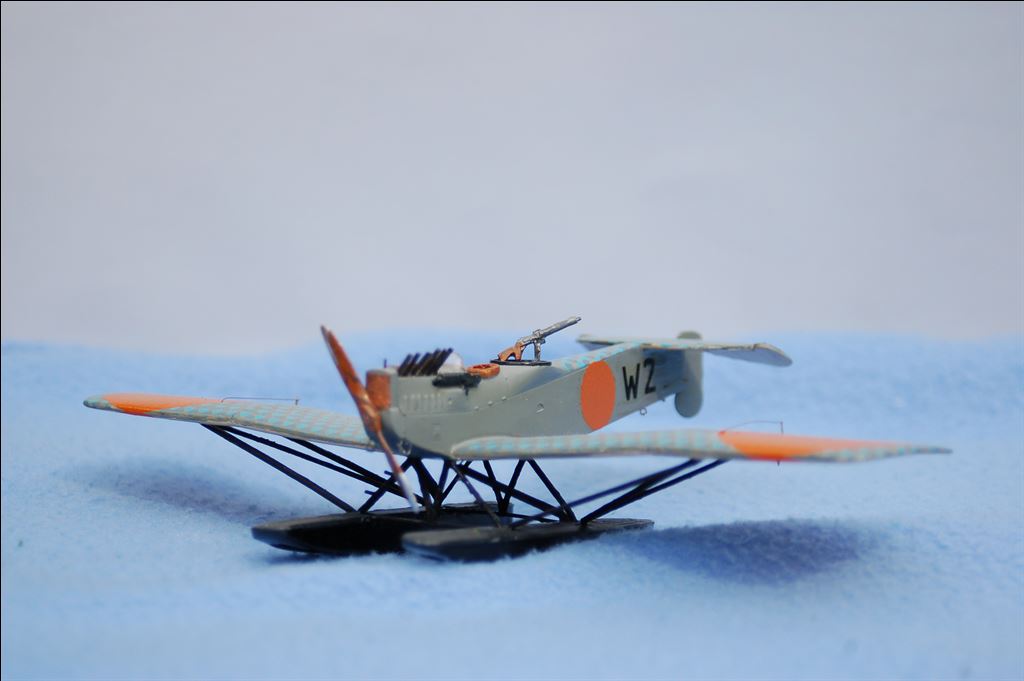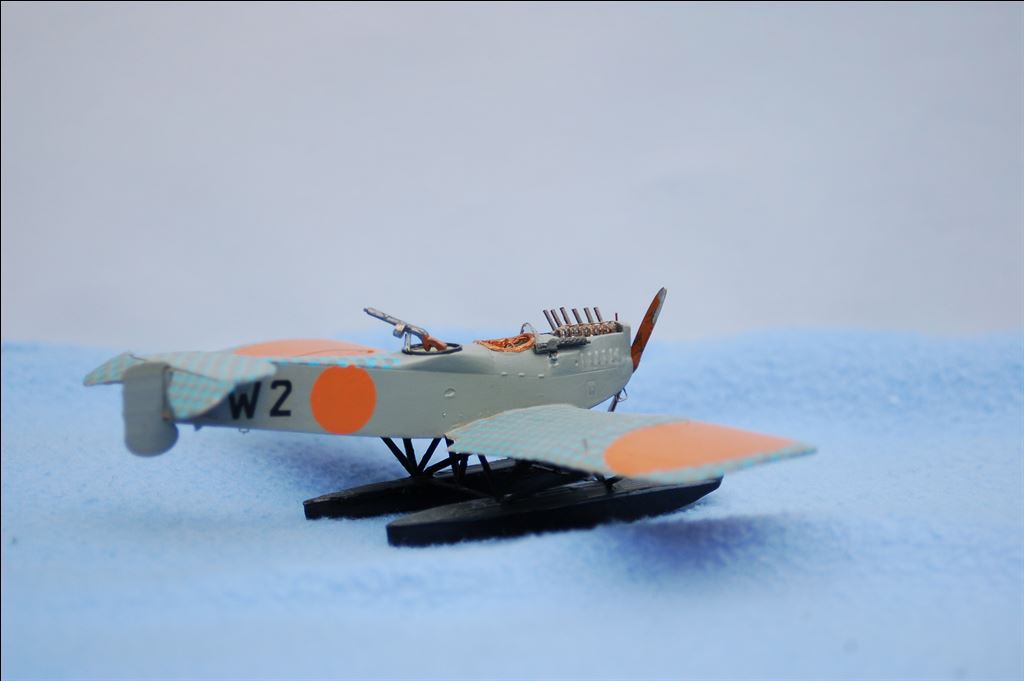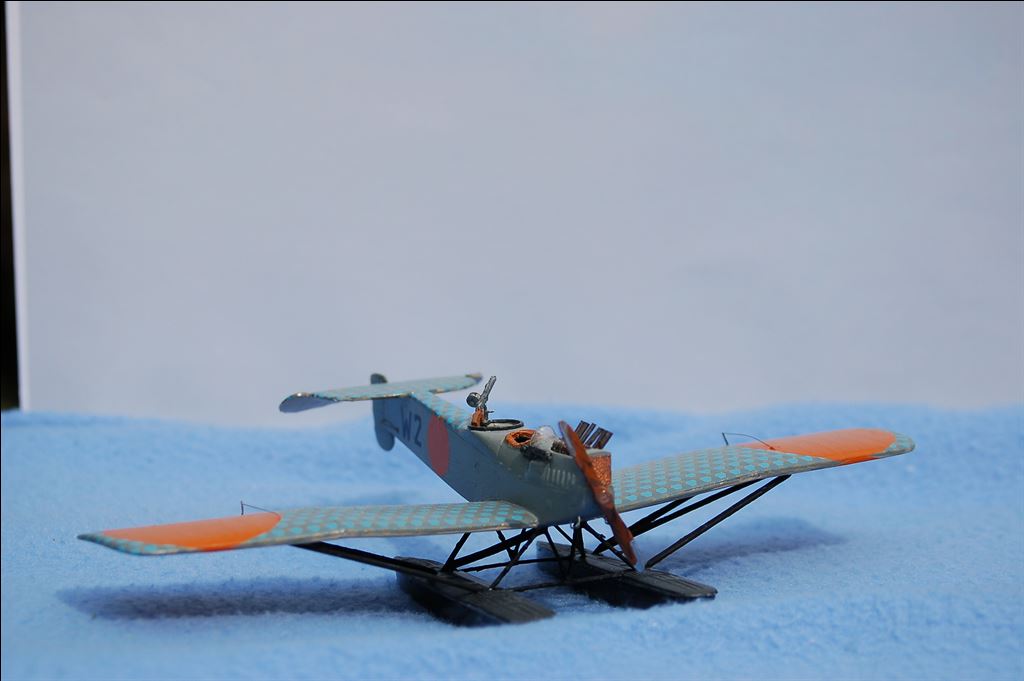History
The Hansa-Brandenburg W-29 was designed by the end of 1917 by Ernst Heinkel as successor of the successful Hansa-Brandenburg W-12.
The German navy demanded a faster aircraft with more fire power to resist the Felixstowe flying boats. The W.29 was a two seat monoplane.
The first production series of six aircraft, numbers 2201 - 2206, was ordered in December 1917. Delivery was in spring 1918.
These six aircraft were equipped with a Benz Bz.lIIb. engine rated 185-195 hp. Remarkable were the six exhausts, pointing upwards at port side of the plane. Also the engine cowling had air intakes.
July 4 the first fight between four W.29s and three Felixstowes occurred. All Felixstowes were shot down and there were no Germans losses.
The W-29 was armed with two fixed forward firing, synchronized Spandau machine guns plus one movable Parabellum machine gun for the observer.
The fuselage resembled its precedent the Hansa-Brandenburg W.12. Also the floats were almost the same. The wing was of a wooden construction covered with doped linen.
The type was very successful and in may 1918 new orders were received, serials 2287- 2300, 2502 - 2536 and 2564 - 2583. These had a (standard Benz Bz III rated 150 hp. The last series of four, 2584 - 2589, was, just like the first series equipped with a Benz B.IIIa rated 185 hp.
The Hansa-Brandenburg W.29 was a so called C-class aircraft.
This C class consisted of two seat aircraft with movable machine guns.
The first series were of model W.29 C3MG.
- MG means extra machine guns.
- FT means wireless transmitter.
- HFT means the type is equipped with a wireless send and receive installation.
So model C2MGHFT is an aircraft with one fixed machine guns; one moveable machine gun and a wireless send and receive installation.
The production series of the W.29 were divided as follows:
| Serial | Type | Engine | Order date |
|---|---|---|---|
| 2201 - 2206 | C3MG | Benz Bz. IIIa á 185 hp | December 1917 |
| 2287 - 2300 | C2MGHFT | Benz Bz. III á 150 hp | April 1918 |
| 2501 - 2506 | C2MGHFT | Benz Bz. III á 150 hp | April 1918 |
| 2507 - 2536 | C3MG | Benz Bz. III á 150 hp | April 1918 |
| 2564 - 2583 | C2MGHFT | Benz Bz. III á 150 hp | Mei 1918 |
| 2584 - 2587 | C3MG | Benz Bz. IIIa/IIb á 185 hp | Juni 1918 |
| 2588 - 2589 | C2MGHFT | Benz Bz. IIIa/IIIb á 185 hp | Juni 1918 |
April 1918 the Hansa-Brandenburg W.33 was ordered to succeed the W.29. This larger aircraft was equipped with one Mercedes rated 260 hp and had a wingspan of 15,85 m. Serials 2538 - 2563 were ordered. The first aircraft had two fixed forward firing machine guns and a Maybach engine rated 260 hp. One had one fixed machine gun and a movable 20 mm necker gun for the observer.
Later the larger W.34 with a Fiat engine rated 300 hp was developed, but this was to late to join the war.
| Dimensions: | |||
| Length: | 9,35 m | Wingspan: | 13,5 m |
| Height: | 3,1 m | Wing area: | - m2 |
| Weights: | |||
| Empty weight: | 1000 kg | Max. start weight: | - kg |
| Performances: | |||
| Max. speed: | 150 km/hr | Climbing speed: | - m/min |
| Cruising speed: | - km/hr | ||
| Range: | - km | Service ceiling: | - m |
| Miscellaneous: | |||
| Engine type: | One Mercedes D-IIIa rated 180 hp | ||
| Crew: | One aviator plus one observer /air gunner | ||
| Armament: | One or two fixed, forward firing 7,9 mm Spandau LMG 08/15 machine guns; one movable 7,9 mm Parabellum MG 14 machine gun for the observer. | ||
During 1918 this aircraft was interned.
Clearly visible is the German hexagonal camouflage pattern on the upper side of the wing.
The floats and styles are black, the fuselage is of a rather light, possibly grey, colour. About operational use in Dutch service nothing is known, probably it has never been used. Also the date of internment and the German serial is not known.
It has stood at the cradle of the later Van Berkel WB, though this aircraft was quite changed compared to the original Hansa-Brandenburg W.29

[Enclosed photo from BeeldBank NIMH. Click on photo for ordering information]

[Enclosed photo from BeeldBank NIMH. Click on photo for ordering information]

[Enclosed photo from BeeldBank NIMH. Click on photo for ordering information]
| Serial | Werknr. | Bestellnr. | Date in service | Date out of service | Notes |
|---|---|---|---|---|---|
| W-2 | 2501? | 1918 | 1919 | Entered service in 1918; Written off in 1919 |
Scale 1/72
- Toko / Eastern Express
- Kit - / 72163: Injection moulded kit of Hansa Brandenburg W29.
- Review, see: InternetModeller.com: Review Toko W.29
- Kit - / 72163: Injection moulded kit of Hansa Brandenburg W29.
Building this model is rather simple. The engine is, for at least the Dutch version, is mirrored, so I replaced the exhausts and so on just to the other side of the engine.
The machine guns were not visible on the photo so I omitted them on my model. On the location is some kind of plate visible, which I added to my model.
The fuselage I painted overall Revell 76, as Humbrol 162 (the colour mentioned in "Camouflage en kentekens..") was no longer available.
On website I noticed that someone has used this colour for his model of the W.29. On the photos shown, it looked rather good.
The undersides of the wings I painted with Humbrol 74, a light yellow colour.
I used the decals of the kit for the camouflage on fuselage and wings, though the hexagons are a bit oversized and also the colours might not be correct. Originally, each side of a hexagon is 15 cm long, which is about 2 mm in 1/72nd scale, those on the decals have sides of approximately 3 mm, in fact to large, though I used them after all as I couldn't find suitable ones.
Another problem was to make nice orange roundels, I bought some decalpaper for inkjet printers and printed them.
The coverage was rather poor and the camouflage-pattern was visible through the decals (see the photo below), so I painted them by hand.
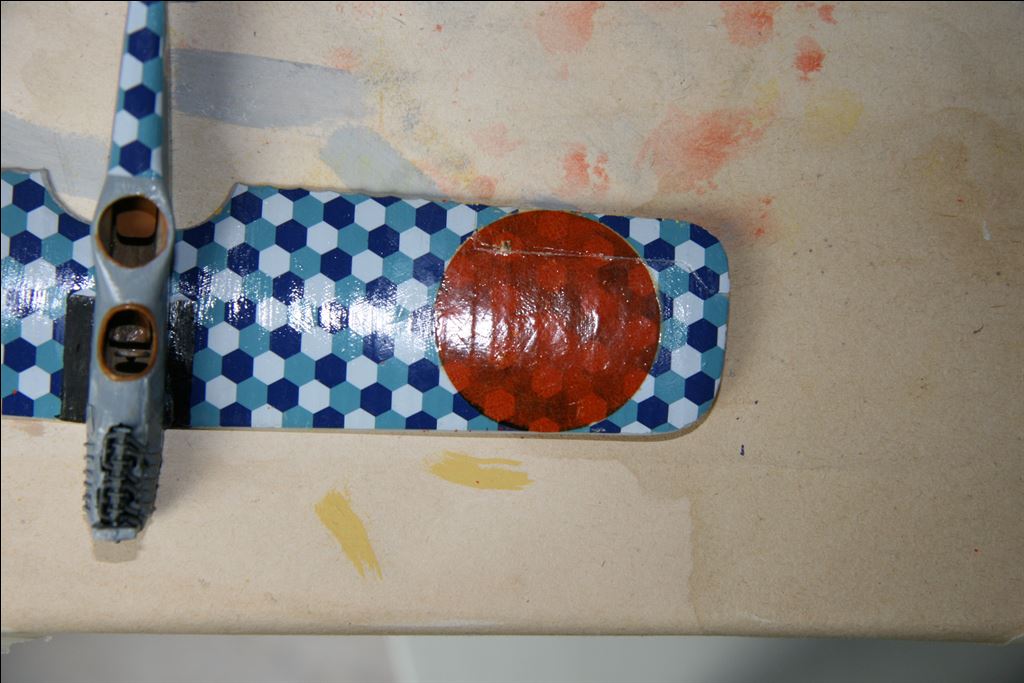
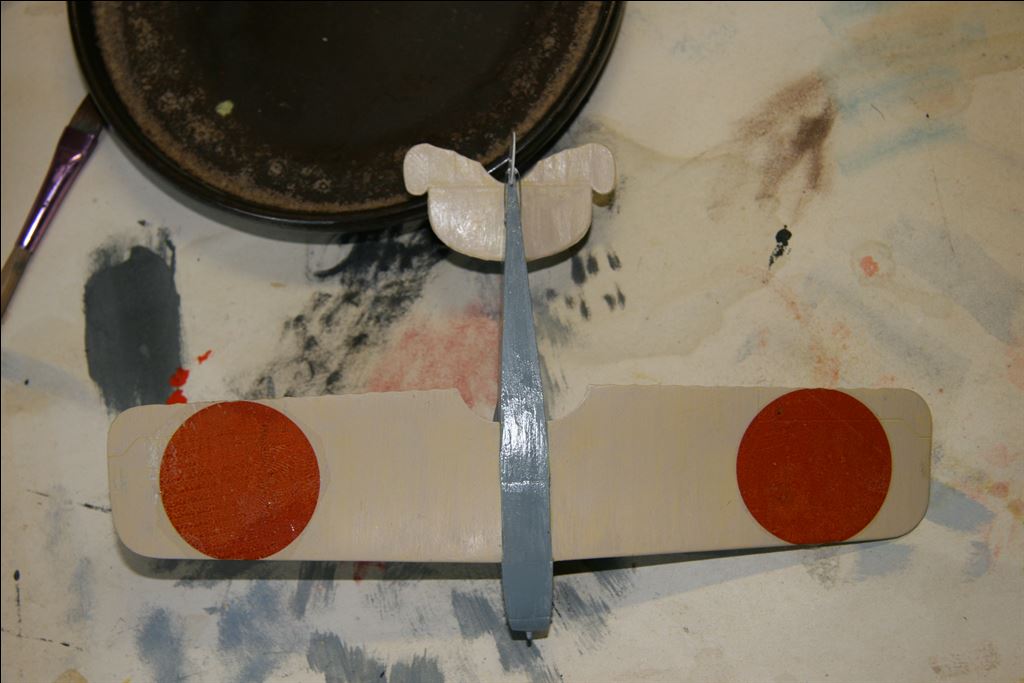
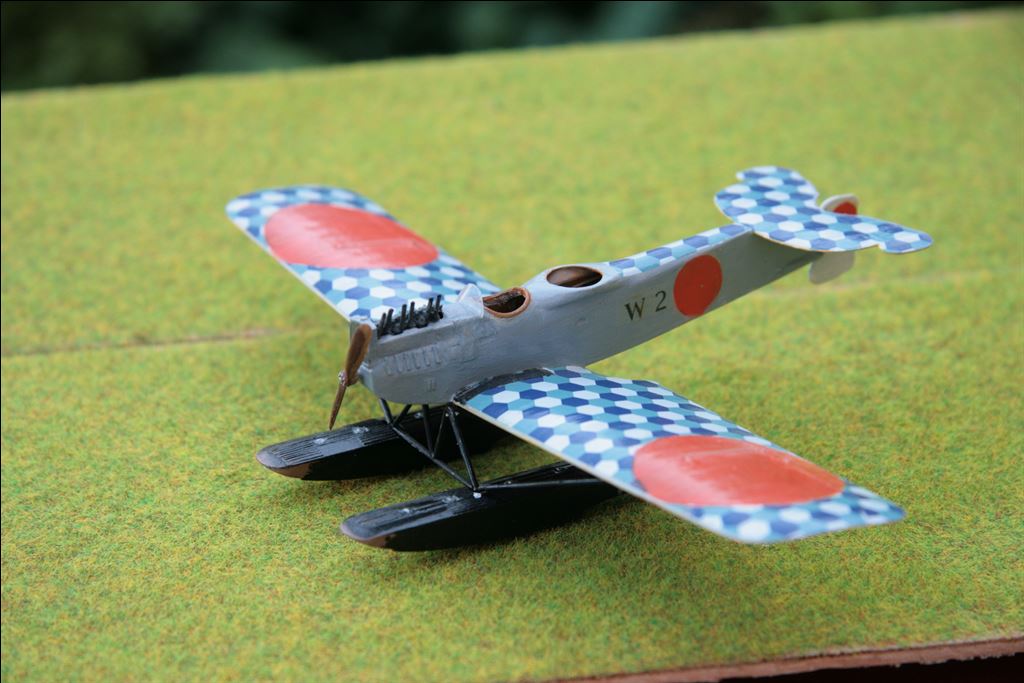
The finished model.
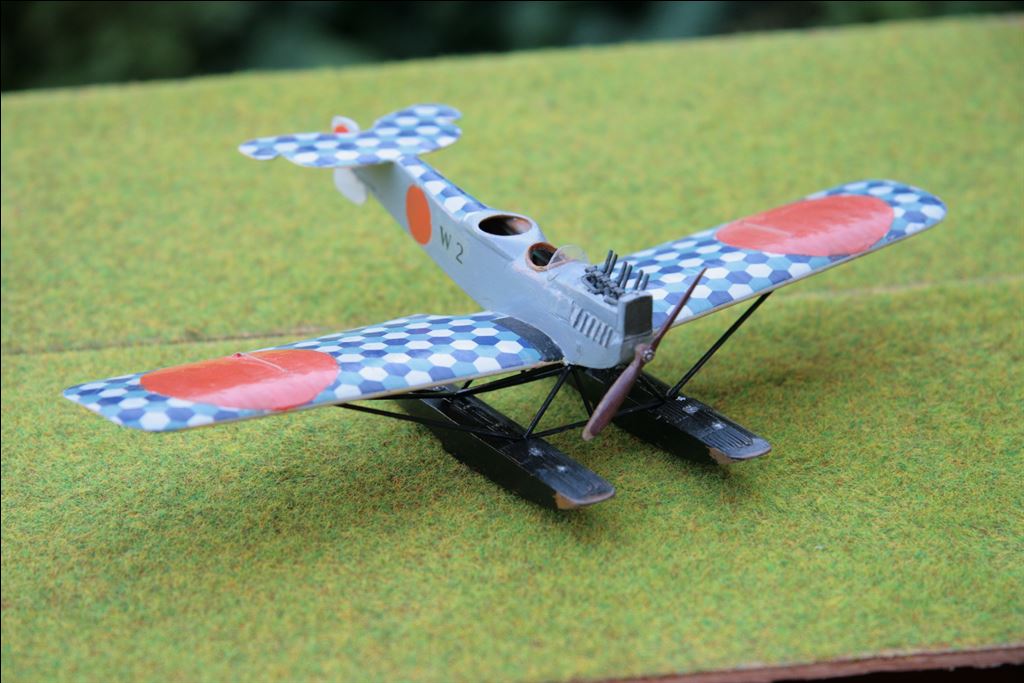
See also references:
- Pegasus
- Kit 4006: Injection moulded kit of Hansa Brandenburg W29.
- MPM
- Kit XX: Injection moulded kit of Hansa Brandenburg W29.
- Review, see:
- CMR
- Set CMR-6: A resin model of about the same quality as the MPM kit.
- Review:
Modelling add-on
- Kora Models
- Set C7294: Transport Carriage Hansa Brandenburg W29 (TOKO, MPM)
- Part Etchings
- Set S72-087,: Hansa Brandenburg W29 (Toko)
Decals
- --
- Set --: --
1/48th Scale
Kits
- Flashback
Modelling add-on
- --
- Set --: --
Decals
- --
- Set --: --
Based on information in “Camouflage en Kentekens“ the Hansa-Brandenburg painted according to the standard prescription for the Imperial German Navy in April 1918.
All horizontal surfaces visible from above should be provided with regular hexagons with sides of 15 cm and grey colours blue, brown and grey violet.
The other surfaces should be painted in a gray-blue hue.
Surfaces on the bottom should be provided with a light blue tint or linen coating kept the natural linen colour.
Everything had to be finished with lacquer.
Hansa-Brandenburg W.29 was fitted with wings regular hexagons, the floats and styles were probably covered with black tar varnish. The hull was light blue grey.
"Camouflage en Kentekens..." lists the German colour Light with the "transcription" listed below (see table)
I am not sure whether this is the same as the colour of the then German Navy used for its aircraft.
| Scheme | Colour name | FS-number | BS-number | Humbrol | XtraColor | Vallejo Model Color | Vallejo Model Air | |
|---|---|---|---|---|---|---|---|---|
| Standard | Fuselage | Light blue-grey | - | - | 162 | X257 | - | - |
| Undersides of wings | matt doped linen | 74 | - | - | ||||
| Uppersides of wings and fuselage | German Naval "lozenge": a pattern of hexagonals. | - | - | |||||
Check www.paint4models.com for an extensive conversion table with lots of colour and paint systems.
Literature.
| Aircraft Archive Aircraft of World War One; Volume 3. | Pag. 86 - 89 | 1989 | Uitgever: Argus Books, Hempsted | |
| Vintage Aviation fotofax German Naval Air Service | Alex Imrie | Pag. 73 - 74 | 1989 | Uitgever: Arms and Armour Press, Poole, Dorset |
| Camouflage en Kentekens | J. Greuter e.a. | 1997 | Uitgeverij Bonneville, Bergen (NH) | |
| Air Enthusiast no.80 The Historical Aviation Journal: Unexpected Windfalls | Bart van der Klaauw | Pag. 54 - 59 | 1999 | Uitgever: Key Publishing, Stamford |
| 85 Jaar Marineluchtvaartdienst in beeld Van Farman tot NH 90 Helikopter | Peter Korbee | Pag. 26 | 2002 | Uitgever: Korbee MLD Promotie, Valkenburg |
Websites.
